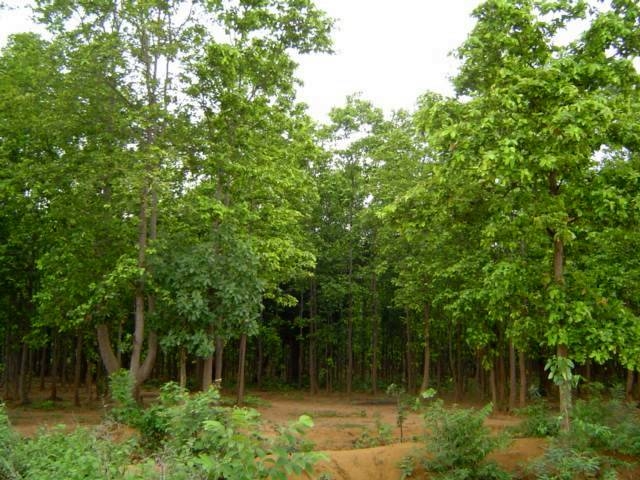Dhenkanal: In spite of wildfires and timber mafia playing havoc with the green cover in the district, it is surprising to note that the regions forest area has actually increased. While the tireless efforts of Vana Surakhya Samiti and introduction of technology have been credited for this, environmentalists see this as a good sign for the environment in the region.
Rapid industrialisation and national highway expansion are constantly taking place at the cost of thousands of trees. Every summer, many costly trees get destroyed in wildfires. In addition, the timber mafia is also there. Yet, a satellite survey has confirmed it that the forest area in the district has increased by 4,261 hectares in the last five years. The district’s total forest area was 1,40,300 hectares in 2015. In 2020-21, it has increased to 1,44,561 hectares.
Presently, an expert team from the Forest Survey of India, Bangalore, is camping in Kamakhyanagar to analyse the findings of the satellite survey.
Notably, there are eight ranges in the district. They include Dhenkanal Sadar range, Kapilas range, Sarangi range, Bhuban range, Kamakhyanagar eastern range, Kamakhyanagar western range, Mahabirod range and Hindol range.
It is worth mentioning that the reserve forests comprising these eight ranges have more ‘Sal’ tress than any other variety of trees. In some places, mixed forests of ‘Asan’, ‘Arjun’, ‘Harida’ and ‘Bahada’ trees can be found in plenty. However, the number of teak trees in the reserve forests is not so encouraging. Only a few teak trees are left in Saptasajya Reserve Forest under Sadar range and Kandhara Reserve Forest under Hindol range.
The Kapilas sanctuary, which is rich in flora and fauna besides being a treasure trove of herbs and shrubs, and spread over an area of 12,559.59 hectares, is the most sensitive sanctuary. It is better known as ‘jumbos’ paradise’ and has been a safe haven for poachers.
To keep the sanctuary out of the poachers’ reach, the Forest department has deputed 350 Vana Surakhya Samitis (VSS) to protect the forest resources. Of the 350 VSSs, 150 are receiving funds. Coordinating with the Forest department, these VSSs are guarding the jungle on rotation basis. At the same time, 60 camera traps have been installed at the strategic locations in the jungle to keep a watch on the movement of timber mafias. These strategies seem to be paying dividends, it was learnt.
Informing about the satellite survey’s revelations, DFO Prakash Chand Gogineni said the district’s forest area has increased in last five years. This has been possible because of the steps taken by the department.
“In order to keep a vigil on the timber mafia, we have installed camera traps in the forest. We are changing the locations of these camera traps constantly. This apart, patrolling has been intensified. Our staff is trained to deal with wildfires.”
With respect to less number of teak trees in the jungles, he said the wild animals hardly get any benefit from these trees. So we are not planting teak saplings in the jungles.
Sources said that the district’s cool climate is conducive for elephants. This apart, the reserve forests host animals like boars, beers, deer, porcupines and variety of reptiles including pythons. Even leopards have been spotted in Kamakhyanagar and Kankadahad areas on several occasions. In addition, the number of king cobras has also increased significantly. But, according to some animal lovers, the exact number of leopards and king cobras in the reserve forests is yet to be ascertained. This is because there has been no counting of these animals.
